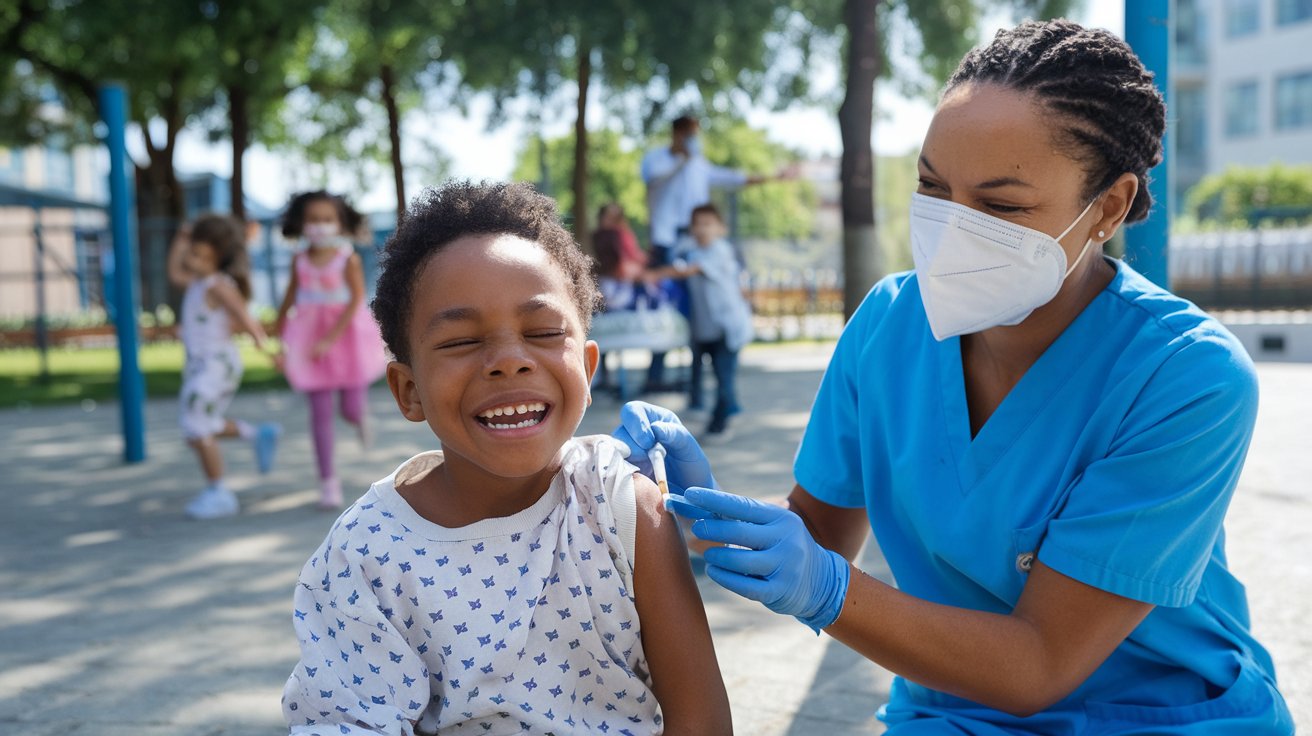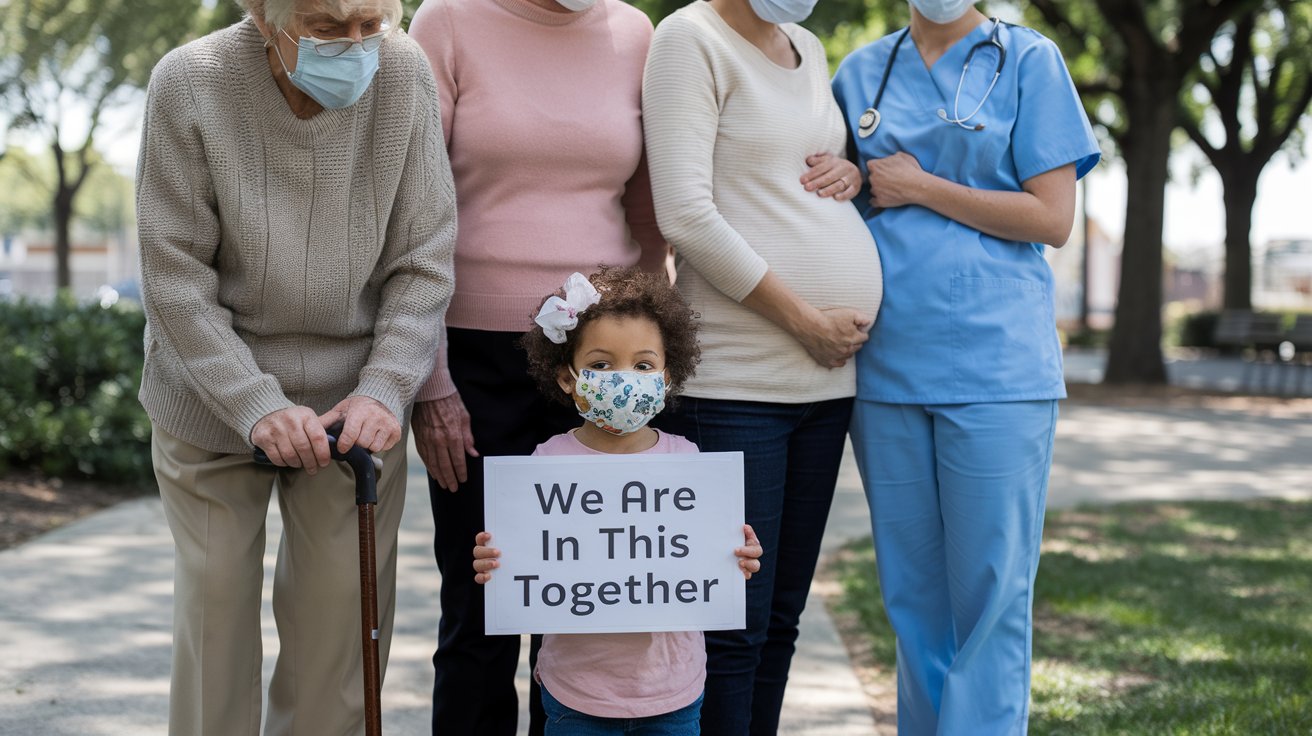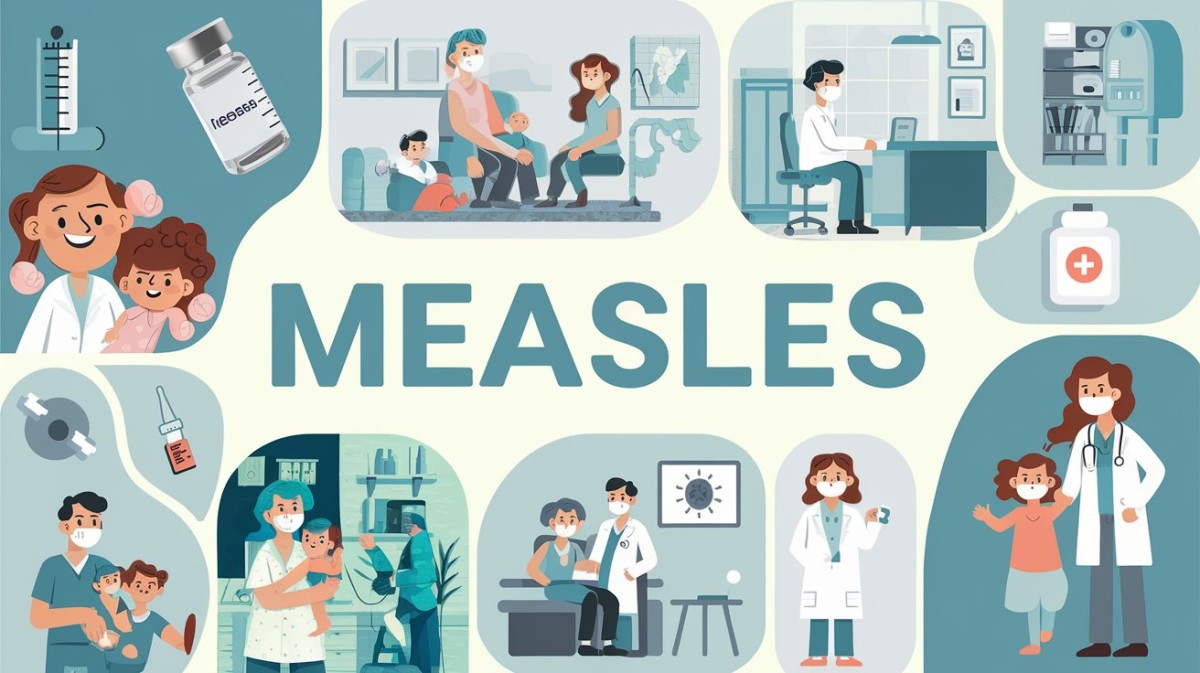When you go for an immunisation, you may sometimes ask why children are immunised against measles, and at what age. Or why is the disease always mentioned during health awareness campaigns? Measles is not just childhood rashes but a dangerously contagious viral disease that has the potential to affect individual humans severely. In today’s blog post, we will explore; what is measles, how it is transmitted, and why it should be stopped.
Introduction to Measles

Measles previously called rubeola is an actual contagious viral disease caused by the measles virus from the paramyxovirus family. It is widespread among children but any individual who has not taken the vaccine can succumb to the disease. It first presents several flu-like signs and symptoms including fever, cough and nasal droplets, then followed by rash all over the body. Measles is an example of an infectious disease which has an available vaccine yet cases are reported frequently in regions where uptake of the vaccine is low.
Symptoms of Measles
Measles symptoms usually develop between 7 and 14 days after exposure to the virus. At first, it looks like a normal flu or, perhaps the common cold, then, it comes back with a vengeance. Here’s a breakdown of the key symptoms:
❖ Fever: The first symptom of measles is usually a high temperature, which can even reach 104 degrees Fahrenheit.
❖ Cough, Runny Nose, and Sore Throat: Like most respiratory illnesses, measles start with cough and sore throat symptoms and soon progresses to measles.
❖ Conjunctivitis: Another usual sign is when people’s eyes are red and watery.
❖ Koplik Spots: These small dot-like white lesions that are slightly blue at the centre are common in the lining of the oral cavity, most frequently in the cheeks. These spots are the first signs of measles; The eruption begins from the head, neck and face and spreads over the whole body.
❖ Rash: The first and most famous sign is a red rash starting on the face and moving down the body. It is a rash that occurs in sun-exposed areas, which may last 5 to 6 days and the skin peels off afterwards.
How Does Measles Spread?

Measles is very infectious and it is transmitted from person to person through aerosols. The virus is spread by the air: if an infected person starts coughing or sneezing, the shot will remain in the air for some time. People can get infected through close contact with an infected person, being nearby even sharing the same air that the infected person breathes.
Measles is such a highly infectious virus that 9 out of every 10 non-immune people who come across an infected person will fall sick to the ailment. Measles is very contagious and thus results in outbreaks in areas where children have not received their vaccines.
Who is Most at Risk?
While anyone can contract measles, certain groups are more vulnerable to severe cases:
❖ Unvaccinated children: Namely, patients who did not take the measles vaccine are at the greatest risk.
❖ Pregnant women: Measles caught during pregnancy increases the risk of premature delivery or delivering a low birth weight baby.
❖ Immunocompromised individuals: Individuals with compromised immune systems such as a compromised cancer patient and anyone with HIV are at a higher risk.
❖ Infants: C Horizontal transmission of the flu is also easily occasioned especially among babies that are below twelve months of age and hence cannot be vaccinated.
Complications of Measles

Even though measles is considered an early childhood disease, it can make a person sick, especially if he belongs to any of the groups discussed above. Some complications include:
❖ Ear infections: The consequence of the measles sickness is ear infections which sometimes cause hearing problems.
❖ Pneumonia: Besides, measles causes immunosuppression and therefore patients are more likely to develop pneumonia. This is the main reason why Malawian children who get measles are likely to die.
❖ Encephalitis: This is an uncommon but severe condition that leads to inflammation of the brain, which could result in the patient’s death.
❖ Subacute: A rare and fatal disease that can develop 7 to 10 years after a person has had measles, SSPE leads to progressive brain degeneration.
A rare and fatal disease which develops 7 to 10 years after a person contracts measles, SSPE results in the degeneration of the brain.
How is Measles Diagnosed?

The diagnosis of measles still relies mostly on the clinical presentation of the disease accompanied by rash and Koplik spots. A healthcare provider could also follow up with a blood test or throat swab to check for the virus.
Treatment for Measles
Currently, there is no known antiviral medication that can be used for measles. However, care is mainly symptomatic and aimed at reducing the risk of developing the clinical picture of pulmonary hypertension. Here are some common methods of managing measles:
❖ Rest and Hydration: Symptoms can be relieved by drinking lots of water and getting enough sleep.
❖ Fever-reducing medications: Paracetamol or ibuprofen: For fever and other discomforts associated with flu, organic chemicals such as paracetamol and ibuprofen are used. Children should not take aspirin because it may lead to Reye’s syndrome.
❖ Vitamin A supplementation: Research has shown that vitamin A has an effect of decreasing the intensity of measles, especially in children.
In severe settings, the patient may need to be admitted to receive adequate treatment for complications such as pneumonia or encephalitis.
Preventing Measles: The Importance of Vaccination
The only known method of avoiding measles is through immunization. The measles vaccine is extremely effective and the MMR vaccine encompasses measles, mumps, and rubella. For instance, the World Health Organization WHO has it that two shots of the vaccine are about 97 per cent efficient in preventing the disease.
The first is administered between the ages of 12 through 15 months and the second at between 4 to 6 years. For unvaccinated citizens, health departments may recommend first or booster doses if there is an ongoing outbreak.
Although individual protection is important, vaccination also leads to community immunity, slowing the diffusion of pathogens in populations.
Why there are still measles outbreaks?

Even though the measles vaccine has been developed, this disease continues to occur, especially where the recipients of the vaccine are limited. These outbreaks are frequently linked to:
❖ Vaccine hesitancy: In his view, some persons do not take their children for immunization due to wrong information or even because of certain beliefs.
❖ Global travel: Because measles is highly contagious, it is extremely easy to spread across borders, especially in areas with low vaccination coverage.
❖ Health disparities: Some people cannot afford to go to the hospital, and this means that some of the affected areas have not mass-vaccinated the people.
Conclusion
Although measles is commonly associated with childhood, this disease can have widespread and quite serious consequences. Perhaps due to vaccines, we have the means to prevent its spread but we still see global hurdles. Generally, it is required to be educated, be vaccinated, and promote the inclusion of health care in order not to allow the measles virus to continue infecting people. Vaccination has, therefore, been the ultimate method of protecting oneself and the majority from this extremely transmittable virus.
